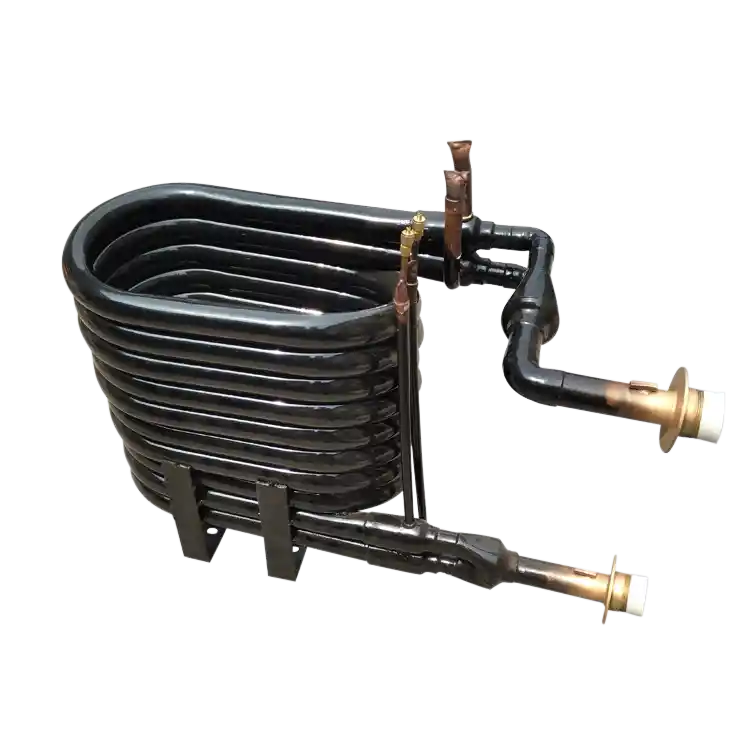Introduction
In this article, we will explore the applications of coaxial heat exchangers in cold storage facilities. Coaxial heat exchangers offer unique advantages that contribute to efficient cooling, temperature control, and preservation of goods in cold storage environments.
1. Understanding Coaxial Heat Exchangers
Coaxial heat exchangers are specialized devices designed for efficient heat transfer between two fluid streams. Their innovative design and configuration make them ideal for various applications in cold storage facilities.
1.1 Working Principle of Coaxial Heat Exchangers
Coaxial heat exchangers consist of an inner tube and an outer tube, allowing for the simultaneous flow of different fluids. Heat is transferred from the inner tube (cold fluid) to the outer tube (warm fluid), facilitating efficient heat exchange and cooling.
1.2 Advantages of Coaxial Heat Exchangers in Cold Storage Facilities
Coaxial heat exchangers offer several advantages when incorporated into cold storage facilities:
| Advantages | Descripción |
|---|---|
| Efficient Cooling | Coaxial heat exchangers facilitate rapid heat transfer, enabling efficient cooling and temperature control in cold storage environments. |
| Precise Temperature Regulation | Coaxial heat exchangers allow for accurate temperature control, ensuring optimal conditions for preserving the quality and integrity of stored goods. |
| Compact Design | Coaxial heat exchangers have a small footprint, making them suitable for installation in space-limited cold storage facilities. |
| Energy Efficiency | The efficient heat transfer of coaxial heat exchangers reduces energy consumption, contributing to cost savings and sustainability. |
| Durability and Reliability | Coaxial heat exchangers can be constructed with durable materials, ensuring long-lasting performance in cold storage applications. |
2. Applications of Coaxial Heat Exchangers in Cold Storage Facilities
Coaxial heat exchangers play a crucial role in enhancing cooling efficiency and temperature control in cold storage environments, ensuring the quality and safety of stored goods.
2.1 Cold Room Cooling
Coaxial heat exchangers are employed for cooling and maintaining low temperatures in cold storage rooms. They facilitate efficient heat exchange, enabling precise temperature control for preserving perishable goods such as fruits, vegetables, meats, and dairy products.
2.2 Blast Freezing
Coaxial heat exchangers are used in blast freezers, which rapidly freeze products to extend their shelf life. They facilitate the transfer of heat from the stored goods to the cooling medium, ensuring quick and uniform freezing.
2.3 Cold Storage Doors
Coaxial heat exchangers can be integrated into cold storage doors to prevent condensation and heat leakage. They assist in maintaining the desired temperature and humidity levels inside the storage area, reducing energy loss and minimizing the risk of product spoilage.
2.4 Refrigeration Systems
Coaxial heat exchangers are essential components of refrigeration systems in cold storage facilities. They enable efficient heat transfer and cooling of the refrigerant, ensuring the proper functioning of the overall refrigeration system.
2.5 Temperature Control in Distribution Centers
Coaxial heat exchangers are utilized in distribution centers to regulate temperatures during the storage and handling of temperature-sensitive goods. They assist in maintaining the required temperature range for different products, ensuring product quality and compliance with regulatory standards.
Conclusion
Incorporating coaxial heat exchangers into cold storage facilities enhances cooling efficiency, temperature control, and preservation of goods. The versatile applications of coaxial heat exchangers in cold storage environments contribute to maintaining product quality, reducing energy consumption, and promoting sustainable cold chain management.


